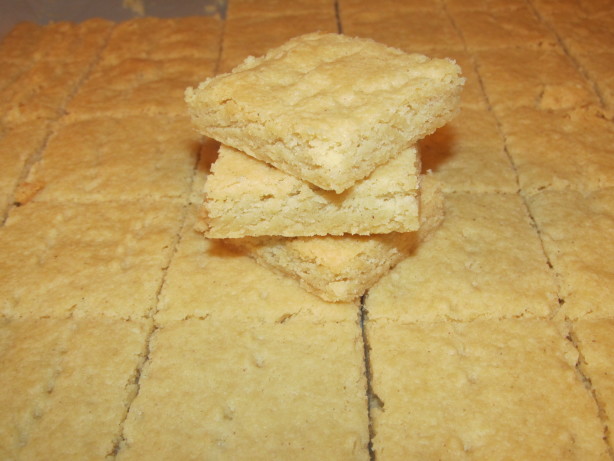 Medieval Fine Cakes were created in 15th Century Europe. They only contain four ingredients: butter, flour, sugar, and cinnamon. Medieval Fine Cakes aren't actually cakes. They are square shaped cookies. The taste reminds me of pop-tart crust. To add flavor, people during this time period would add honey on the top of the cookies. It isn't clear which social group consumed Medieval Fine Cakes, but I infer that it was middle class. Medieval Fine Cakes include cinnamon, which is a spice. Spices were only a luxury that the upper class had. However, Medieval Fine Cakes also use honey, and that it is an aspect that the lower class used to add flavor to their food. This is why I think that it was more of the middle class that created these cookies.
Medieval Fine Cakes were created in 15th Century Europe. They only contain four ingredients: butter, flour, sugar, and cinnamon. Medieval Fine Cakes aren't actually cakes. They are square shaped cookies. The taste reminds me of pop-tart crust. To add flavor, people during this time period would add honey on the top of the cookies. It isn't clear which social group consumed Medieval Fine Cakes, but I infer that it was middle class. Medieval Fine Cakes include cinnamon, which is a spice. Spices were only a luxury that the upper class had. However, Medieval Fine Cakes also use honey, and that it is an aspect that the lower class used to add flavor to their food. This is why I think that it was more of the middle class that created these cookies. Recipe: ****This recipe makes 100 cookies**** (To create 50 cookies, just cut the ingredients in half)
INGREDIENTS-
COOKING INSTRUCTIONS-
- Cream together the sugar, salt, and butter.
- Mix together the cinnamon and flour. Add this to the creamed mixture. Mix in water, as needed, to make the dough manageable.
- Press dough into 2-3 baking sheets lined with baking parchment; prick all over with a fork at regular intervals.
- Bake at 325 degrees F for 30 minutes; cut into 100 squares.
Source for recipe and image-




